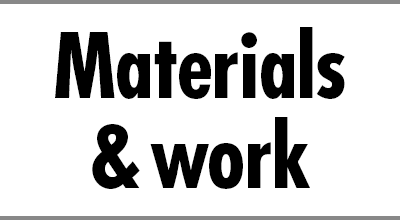1/3 of the earth is iron
If you express the elements that make up the earth by the approximate percentage of quantity, you get 32.1% iron, 30.1% oxygen, 15.1% silicon, and 13.9% magnesium. Iron exists in the greatest quantity.
However, most of that iron is located in the inner core of the earth. The crust of the earth is made up of approximately 46% oxygen, 27% silicon, 8% aluminum, and 5% iron.
So even though the earth as a whole contains a great amount of iron, the amount that we can dig up and use is limited because the quantity of iron distributed near the earth’s surface is low.
Iron in our bodies
We have approximately 3 to 5 grams of iron in our bodies. 2/3 of this makes up the hemoglobin contained the red blood cells within our blood. Iron is also found in our liver and bone marrow.
The iron in our blood binds with oxygen to carry oxygen throughout our entire body. The bright red of arterial blood is the color of red iron rust. Blood that has carried oxygen to the various locations in our body has a low rust content and is dark in color.
If we did not have an iron in our bodies, we could not deliver blood throughout our body, and could thus not live. Iron is one of the most essential elements in the human body.
Out of all of the metal products produced worldwide, an amazing 90% of them are made of some kind of iron and steel combination.
What is an “iron and steel combination”?
“Iron and steel combination” is a term that covers all sorts of iron and steel, such as iron alloys like iron and stainless steel.
Stainless steel pots
Stainless steel pots are convenient to use in that they do not rust easily and are stronger than aluminum pots. But because stainless steel has a lower thermal conductivity than aluminum or iron, heat does not spread out well, resulting in the drawback of frequent charring. When simmering things for long periods of time, you have to stir more frequently than you would for other types of pots or run the risk of burning the ingredients. Stainless steel fry pans and woks do exist, but their lack of popularity probably stems from this poor heat circulation.
Also, even though UNS 304 grade steel does not rust easily, it often cannot be used for induction cooking equipment because it is a non-magnetic material. On the other hand, UNS 430 grade steel, which is the one of the easiest to rust and one of the most inexpensive of all stainless steel types, can be used for most types of induction cooking equipment. Thus, for things like kettles, you can find products that only use UNS 430 grade steel for the bottom surface that comes into direct contact with the flame and use rust resistant UNS 304 grade steel for the top portion so that they can be used for both induction and gas heating.
In the realm of expensive pots, there are products that sandwich UNS 430 grade steel with UNS 304 grade steel to achieve a pot that is both usable for induction cooking as well as rust resistant. Moreover, by utilizing a multilayer construction that sandwiches in aluminum as well, thermal conductivity is improved, thermal circulation is good, and heat is distributed evenly.
For pressure cookers, inexpensive pots also tend to employ a multilayer construction for the bottom only. But high grade pots have multilayer constructions of up to five layers on the sides as well. They are sturdy and stand up to strong levels of pressure. Being able to increase the pressure means being able to cook with even higher temperatures on the inside of the pot. This leads to the benefit of being able to cook even faster. And using sturdy stainless steel allows manufacturers to make pots that stand up to high internal pressures.
Woks
Woks are wonderful all-purpose cookware that can handle stir fry as well as deep frying and soups. It is a bit difficult to cook thin, flat items like okonomiyaki and pancakes, but most foods are perfectly fine with wok cooking. If you don’t have any fry pans, as long as you have one good wok, you can pretty much prepare any kind of home cooking.
There are stainless steel woks and titanium woks, but if you want a really good wok, you simply must go with a beaten iron wok with its wonderful heat circulation and smooth oil distribution. And unlike press-processed woks, heavyweight beaten woks made with a hammer pounding the iron plate several thousand times wind up with minute indentations each time the surface is pounded. The more you use one of these woks, the more oil permeates into these indentations to form a very easy to use piece of cookware that prevents burning. And they also reportedly grow stronger through the pounding.
They are iron, so if you leave water on them they will rust fairly quickly. But they clean easily after cooking if you put a bit of hot water in them and go over them quickly with a bamboo brush. And if you dry them by heating them a bit after that, you basically have a rust free piece of cookware. They don’t require any detergents, and taking care of them is a breeze.



















